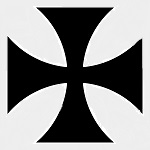Wings of the Great War WW11201 German Halberstadt CL.II Escort Fighter/Ground Attack Aircraft - Schlasta 26b, Early 1918 (1:72 Scale)
"Open fire only at close range, and then only when the opponent is squarely in your sights."
- Dicta Boelcke
 The Halberstadt CL.II was a German two-seat escort fighter/ground attack aircraft of World War I. It served in large numbers with the German Luftstreitkrafte (Imperial German Army Air Service) in 1917-18.
The Halberstadt CL.II was a German two-seat escort fighter/ground attack aircraft of World War I. It served in large numbers with the German Luftstreitkrafte (Imperial German Army Air Service) in 1917-18.
Early in 1917, Idflieg, the German Army Inspectorate of Flying Troops, developed a requirement for a new type of two-seat aircraft, smaller than the existing C-type aircraft. This type, to be known as CL-type (Light C type) aircraft, were to be used to equip Schutzstaffeln (Protection flights) to escort reconnaissance aircraft. To meet this requirement, Halberstadt developed an aircraft based on its earlier, unsuccessful Halberstadt D.IV single-seat fighter. Originally designated the Halberstadt C.II, it was redesignated the Halberstadt CL.II when the CL designation was applied.
The CL.II was a single-engined biplane, with an all-wooden structure. The fuselage was covered with thin plywood panelling and housed the crew of two in a single cockpit, with the observer's 7.92 mm (.312 in) machine gun being mounted on an elevated gun ring, giving a good field of fire, allowing downwards fire at targets on the ground. A tray large enough to hold ten stick grenades was attached to the left side of the fuselage. The single-bay wings were fabric-covered, with a swept upper wing.
The aircraft had provisions for a wireless radio. When needed the radio and antenna could be installed in the observer's cockpit and a generator, that would also supply current for heated flight suits, could easily be installed. The generator was directly driven by a pulley on the engine and mounted on the left side with a tear drop shaped fairing covering it. With the generator removed, a flat panel would be fitted instead.
The CL.II passed its Typenprufung (type-test) on May 7th, 1917, which resulted in production orders being placed. Halberstadt built 700 CL.IIs by the time production shifted to the improved CL.IV in mid-1918. A further 200 CL.II aircraft were built in 1918 by the Bayerische Flugzeug-Werke (BFW).
Pictured here is a 1:72 scale replica of a German Halberstadt CL.II escort fighter/ground attack aircraft that was attached to Schlasta 26b during early 1918.
Sold Out!
Dimensions:
Length: 4-inches
Wingspan: 5-inches
Release Date: June 2016
Historical Account: "Schlachtstaffeln" - The Schlachtstaffeln (often abbreviated to Schlastas) were specialized fighter-bomber squadrons in the Luftstreitkrafte during World War I. The Schlastas had their origins in the Schutzstaffeln (escort squadrons, often abbreviated to "Schusta") initially formed to escort reconnaissance aircraft. However during 1917 the Schustas were increasingly frequently employed for ground attack missions and deployed with regular reconnaissance aircraft for what the Allies termed "contact-patrols"; reconnaissance missions at low altitude over the front lines. The aircraft involved in such missions were often subjected to very heavy ground fire, and it became clear to the German High command that new, specialized units and more robust aircraft types were needed for these missions.


